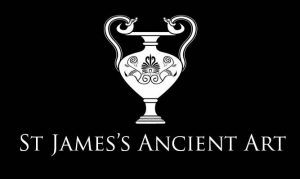Oil lamps, or a lychnus, from the Greek λυχνος, were commonplace throughout the Roman Empire, and were used for domestic, public, and religious purposes. These included funeral ceremonies, lighting up businesses, and creating ‘special effects’ at the theatre. The oldest Roman lamps date back to the third century BC, and it is thought that they were influenced by the Southern Italic style. These were more enclosed than their predecessors, allowing for further decoration on the discus. The vast trade networks set with the expansion of the Roman Empire allowed this item to be spread across Europe, Eastern Asia and Northern Africa, which led to the development of several provincial variations.
Chariot racing was an immensely popular sport across the Roman Empire. Chariots were pulled by either two horses, as depicted here, known as a ‘biga’ or were pulled by four horses, known as a ‘quadriga’. Chariot teams wore different colours, such as blue, green, red or white. Mosaics depict famous clashes between two teams, the chariots, horses and their occupants splayed out spectacularly. Scenes on oil lamps depict both two and four horse-drawn carriages, although with the confines of space, two was the easier depiction. Chariot races and gladiatorial scenes were frequently used to decorate domestic items, such as oil lamps, and could have been given as souvenirs.
To discover more about the ancient origins of oil lamps, visit our relevant post: Oil Lamps in Antiquity.












